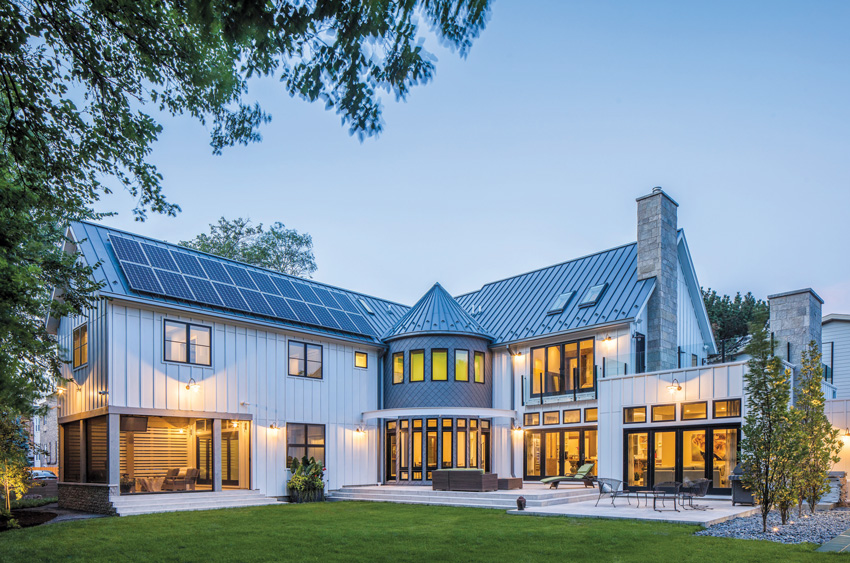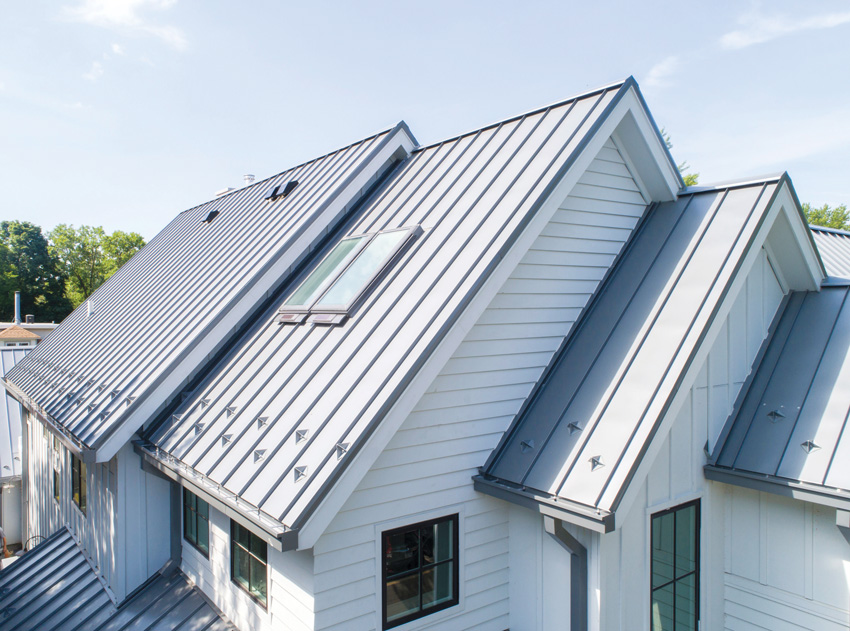Achieving Design Objectives with Metal Roofs and Facades
Learning Objectives:
- Define what a cool roof is and how it impacts the efficiency of a building by managing solar radiation and minimizing the amount of heat that transfers through the roof and into the interior.
- Explain how a metal roof enhances solar panel performance and supports rainwater harvesting.
- List the specific credits in LEED v4 that a metal roof can contribute toward earning.
- Explore how metal panels can be used to create distinct architectural elements, such as curved roofs, perforated walls, mosaics, and continuous lines from the roof to the wall.
Credits:
Approved for Core Learning
This course can be self-reported to the NLAA
Course may qualify for Learning Hours with NWTAA
Course eligible for OAA Learning Hours
This course is approved as a core course
This course can be self-reported for Learning Units to the Architectural Institute of British Columbia
There is so much to consider about the materials that are ultimately selected for the roof or cladding of a project. How does it perform? How long until it will need to be replaced? What sustainability benefits does it offer? Can designers use it in a number of ways to achieve the desired aesthetic? Metal is a material that is uniquely equipped to deliver desirable solutions in terms of performance, sustainability, and creative license.

Photo: A.J. Brown
This striking and sustainable Chicago residence, designed by Nate Kipnis, features a standing-seam metal roof that helps create the desired farmhouse aesthetic and contributes toward the efficient performance of the home.
While the benefits of using metal on a roof or as cladding—its longevity, durability, impressive strength-to-weight ratio, recyclability, and variety of finishes— are well known to many, designers often learn a lot by seeing how the material has been applied in different types of projects. This course will profile seven different building envelopes that feature either a metal roof or metal wall panels on the facade, and, in some cases, both. Thankfully, many of the designers who worked on these projects agreed to share their insights and provide context as to why they used metal in the ways that they did.
These projects range from a large residence in Chicago that features the latest in sustainability to museums and banks designed to be distinct and make a lasting impression. While these projects represent a wide cross-section of building types and design objectives, they all achieved their goals by incorporating metal into their roofs and/or facades.
A Large, Sustainable, Healthy Home in Chicago
An impressive residence built in the Horner Park neighborhood of Chicago showcases the latest techniques and products being used to create beautiful, energy-efficient, and highly sustainable structures in even the most challenging settings. This project was unique for many reasons. Firstly, the property spans five of the city’s standard 100-foot by 125-foot lots, making it unusually large. It is also located at the end of a dead-end street with a backyard that abuts the recently revitalized Chicago River, offering almost rural views across the river and into a 57-acre city park from a very urban zip-code.
“The owners wanted a highly sustainable home that created a healthy environment for their family,” explains architect Nate Kipnis, FAIA, of Kipnis Architecture + Planning. Another design goal was to make the home feel as peaceful as possible by making the most of the views available through the windows, without distorting the neighborhood feel. In order to maximize the beautiful views and maintain the scale of the neighborhood, the front of this L-shaped house was purposefully designed to be the same proportion as the neighboring homes, with the tail of the house being somewhat hidden as it stretches toward the river at the end of the dead-end street. The shape of the structure also helps to block noise from a major street that is just two blocks away. “There isn’t a site in Chicago like this,” Kipnis explains, “where you live in the middle of a city and don’t see a building.”
As for creating the highly sustainable, healthy, suburban-scale home in Chicago, Kipnis is uniquely equipped for the challenge as the national co-chair of the American Institute of Architects (AIA) 2030 Commitment Working Group. The final project contains more than 75 unique and sustainable features, which ultimately resulted in the creation of a house that is over 50 percent more efficient than a comparable home designed to the ASHRAE 90.1 2003 baseline standard.

Photo: A.J. Brown
Cool-roof technology causes a surface to reflect more sunlight and absorb less heat than a standard roof, reducing heat gain that occurs inside the home and keeping local outside air cooler.
A quick review of some of those sustainability-enhancing features includes south-facing solar photovoltaic panels that provide 26 percent of the total energy use. The appliances that typically use natural gas (the water heater, cooktop, and dryer) are now high-efficiency electric appliances. The mechanical system is an air-source heat pump that extracts heat out of the air, even when temperatures reach -20 degrees Fahrenheit. Electricity use was also reduced by providing sufficient levels of daylight throughout the house with skylights and Solatubes so that the interior is very comfortable without turning the LED lights on when daylight is present.
Beyond using less energy, the house has been designed not to leak. It is air-tight and highly insulated. The continuous foam insulation selected for the exterior of the wall system limits thermal transfer and supports the efficiency of the HVAC system.
Although fireplaces are not typically found in highly efficient homes, the fireplaces chosen for this project use outside combustion air to burn the wood. This is a more sustainable approach because the conditioned air is not consumed by the fire. This system also uses a glass door to separate the conditioned interior air from the air in the fireplace that is going up the flue. This type of product allowed the team to deliver that comfortable-home feeling without compromising the performance of the project.
The materials were also carefully selected with sustainability criteria in mind. The siding is cement fiberboard made from waste wood and cement. Many of the materials are from local sources or recycled. The underside of the soffits and the ceiling in the screened porch feature local reclaimed barn wood. The standing-seam metal roof helped achieve the farmhouse aesthetic that the clients wanted while contributing toward the overall sustainability of the project in many ways.













